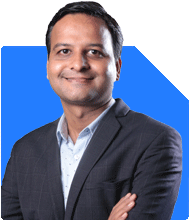Should I invest in stocks or build an emergency fund with my fluctuating savings?
Ramalingam Kalirajan |10872 Answers |Ask -Follow
Mutual Funds, Financial Planning Expert - Answered on Aug 22, 2024
He has an MBA in finance from the University of Madras and is a certified financial planner.
He is the director and chief financial planner at Holistic Investment, a Chennai-based firm that offers financial planning and wealth management advice.... more

I can save an amount of 3000-5000 per month apart from my regular monthly investments of Sip in mutual fund, insurance and bank RD. Where should I invest this amount since it is fluctuating in nature?
1. Building a Contingency Fund
Importance of Contingency Fund: A solid emergency fund is crucial. It provides financial security during unexpected situations like job loss or medical emergencies.
Utilizing Your Fluctuating Savings: Allocate a portion of your variable savings to build this fund until it reaches at least six months of your monthly expenses.
Placement of the Fund: Consider keeping this fund in a liquid fund or a high-interest savings account. These options offer better returns than a regular savings account while maintaining liquidity.
2. Enhancing Existing Mutual Fund SIPs
Topping Up Your SIPs: You’re already investing in mutual funds through SIPs. Consider using your additional savings to top up these existing SIPs periodically.
Flexibility with Fluctuating Amounts: Since the amount varies, you can increase your SIP contributions when you have more funds. Most fund houses allow SIP top-ups, making this a flexible option.
Preference for Actively Managed Funds: Actively managed funds often outperform the market. They are managed by experienced fund managers who can adjust strategies based on market conditions. This can potentially yield better returns than index funds, especially in a fluctuating market.
3. Investment in a Flexi-SIP
What is a Flexi-SIP?: A Flexi-SIP allows you to invest different amounts each month, depending on your cash flow. This flexibility aligns perfectly with your fluctuating savings.
Choosing the Right Funds: Since your investment amount varies, choose funds that align with your long-term goals. Avoid direct funds and instead, go for regular funds through a Certified Financial Planner (CFP). This way, you benefit from professional guidance without the hassle of constant monitoring.
Diversification: Ensure that your Flexi-SIP is diversified across different sectors and market capitalizations. This spreads your risk and enhances the potential for growth.
4. Investing in Gold
Safe-Haven Asset: Gold is considered a stable investment, especially during economic uncertainty. It’s a good hedge against inflation and currency fluctuations.
Options for Investing in Gold: You can invest in gold through Sovereign Gold Bonds (SGBs) or Gold ETFs. SGBs are particularly attractive as they offer an annual interest payment on top of the gold price appreciation.
Aligning with Your Fluctuating Savings: Since the investment in gold can be flexible, you can allocate part of your variable savings here. This is a long-term investment that can protect your portfolio during downturns.
5. Consider Debt Funds for Short-Term Goals
Debt Funds as a Stable Option: If you have short-term financial goals, debt funds could be a good fit. They are less volatile than equity funds and provide steady returns.
Systematic Transfer Plan (STP): You can invest your fluctuating savings in a debt fund and set up an STP to transfer a fixed amount monthly into an equity mutual fund. This provides the benefits of both debt and equity investments, offering stability and growth potential.
6. Utilizing Recurring Deposits (RDs)
Recurring Deposits for Safety: RDs are a safe investment option with guaranteed returns. They suit individuals who prefer low-risk investments.
Flexibility with Fluctuating Contributions: Many banks offer flexible RDs where you can vary your deposit amount. This aligns well with your fluctuating savings.
Balance with Higher Growth Options: While RDs offer safety, they don’t provide high returns. Combine RDs with other higher growth options like mutual funds to balance safety and returns.
7. Investing in a Child's Education Plan
Long-Term Goal Alignment: If you’re planning for your child’s education, investing in a specific child education plan might be beneficial. These plans are designed to meet the financial needs of education, often offering insurance coverage as well.
Regular Contributions: You can direct your fluctuating savings toward this goal. These plans often allow flexible premium payments, making them suitable for variable incomes.
Tax Benefits: Many child education plans offer tax benefits under Section 80C, adding to their attractiveness.
8. Strengthening Your Retirement Corpus
Preparing for Retirement: Since you aim to retire early, strengthening your retirement corpus is vital. This can be achieved by contributing your additional savings toward a retirement-specific mutual fund.
Retirement Planning with Variable Income: Consider using a flexible plan that allows varying contributions. This ensures that even with fluctuating savings, you consistently build your retirement fund.
Benefit of Regular Funds: Investing through a CFP can provide tailored advice, ensuring your retirement plan is on track. Regular funds offer ongoing professional management, which is crucial for long-term goals like retirement.
9. Avoiding the Temptation of High-Risk Investments
Lessons from Past Losses: Given your previous experience with losses in options trading, it’s wise to avoid high-risk investments. Stick to safer, more predictable investment options that align with your financial goals.
Focus on Steady Growth: Instead of seeking quick gains, focus on steady, consistent growth. This approach, while less glamorous, is more likely to lead to financial stability and success in the long run.
10. Regular Review and Adjustment
Importance of Regular Review: As your income and expenses change, regularly review your investments. This helps in making necessary adjustments to stay on track with your goals.
Engage with a Certified Financial Planner: Regular consultations with a CFP can provide valuable insights. They can help you adjust your strategy based on changes in your financial situation.
Flexibility in Approach: Keep your investment approach flexible. If your income increases, consider increasing your SIP contributions or exploring new investment opportunities.
Finally
Your journey towards financial stability and growth is commendable. By smartly allocating your fluctuating savings, you can strengthen your financial future. Focus on building a robust emergency fund, enhancing your existing investments, and preparing for long-term goals like retirement and your child's education. Avoid high-risk investments and keep your approach flexible. With consistent efforts and professional guidance, you’re well on your way to achieving your financial goals.
Best Regards,
K. Ramalingam, MBA, CFP,
Chief Financial Planner,
www.holisticinvestment.in
You may like to see similar questions and answers below
Ulhas Joshi |280 Answers |Ask -Follow
Mutual Fund Expert - Answered on Sep 08, 2023
Sanjeev Govila | Answer |Ask -Follow
Financial Planner - Answered on Jan 23, 2024
Ramalingam Kalirajan |10872 Answers |Ask -Follow
Mutual Funds, Financial Planning Expert - Answered on Feb 19, 2024
Ramalingam Kalirajan |10872 Answers |Ask -Follow
Mutual Funds, Financial Planning Expert - Answered on Feb 01, 2025
Ramalingam Kalirajan |10872 Answers |Ask -Follow
Mutual Funds, Financial Planning Expert - Answered on Aug 04, 2025
Radheshyam Zanwar |6735 Answers |Ask -Follow
MHT-CET, IIT-JEE, NEET-UG Expert - Answered on Dec 06, 2025
Dr Nagarajan J S K |2576 Answers |Ask -Follow
NEET, Medical, Pharmacy Careers - Answered on Dec 06, 2025
Mihir Tanna |1090 Answers |Ask -Follow
Tax Expert - Answered on Dec 06, 2025
Ramalingam Kalirajan |10872 Answers |Ask -Follow
Mutual Funds, Financial Planning Expert - Answered on Dec 06, 2025
Radheshyam Zanwar |6735 Answers |Ask -Follow
MHT-CET, IIT-JEE, NEET-UG Expert - Answered on Dec 06, 2025
Radheshyam Zanwar |6735 Answers |Ask -Follow
MHT-CET, IIT-JEE, NEET-UG Expert - Answered on Dec 06, 2025
Radheshyam Zanwar |6735 Answers |Ask -Follow
MHT-CET, IIT-JEE, NEET-UG Expert - Answered on Dec 06, 2025
Dr Dipankar Dutta |1837 Answers |Ask -Follow
Tech Careers and Skill Development Expert - Answered on Dec 05, 2025
Dr Shyam Jamalabad |108 Answers |Ask -Follow
Dentist - Answered on Dec 05, 2025
Dr Shyam Jamalabad |108 Answers |Ask -Follow
Dentist - Answered on Dec 05, 2025



























